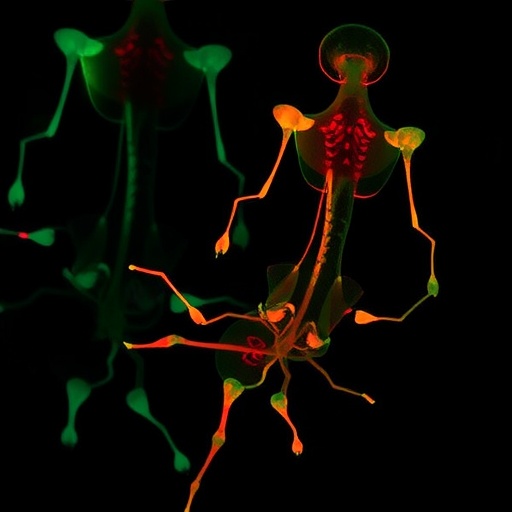In recent years, the hunt for effective cancer therapies has taken a significant turn, with researchers focusing on a compound known as nafamostat mesylate. This intriguing drug, originally developed for use as an anticoagulant, has now been acknowledged for its multifaceted anticancer properties. A recent study published in BMC Pharmacology and Toxicology has shed light on the mechanisms by which nafamostat mesylate induces apoptosis in human fibrosarcoma cells. The findings provide novel insights into a potential therapeutic avenue for treating this aggressive form of cancer, which has thus far remained resistant to many traditional treatment modalities.
Fibrosarcoma is a type of cancer that arises from fibrous connective tissue, commonly presenting a formidable challenge to oncologists due to its tendency to metastasize aggressively. Historically, treatment options have been limited, often encompassing surgery, radiation, and chemotherapy, each with varying degrees of efficacy and significant side effects. Thus, the search for new agents that can induce cancer cell death without adversely affecting surrounding healthy tissue is more essential than ever. In this context, the study conducted by Yildirim and Bakar-Ates holds promise for a breakthrough in the therapeutic landscape of fibrosarcoma.
The innovative approach of the study focused on elucidating the molecular pathways affected by nafamostat mesylate. The researchers employed a variety of in vitro techniques to assess its impact on fibrosarcoma cell lines. Remarkably, the study unveiled that nafamostat mesylate triggers mitochondrial apoptosis—a process that causes programmed cell death through mitochondrial pathways. This is particularly notable, as mitochondrial apoptosis is a highly regulated and complex process that many anticancer drugs struggle to effectively exploit. The implications of these findings can be extensive, providing vital data on how nafamostat mesylate might navigate the hurdles faced by various cancer treatments.
In addition to highlighting the compound’s capacity to induce apoptosis, the investigation also revealed a critical link between nafamostat mesylate treatment and the suppression of matrix metalloproteinase (MMP) gene expression, specifically MMP-2 and MMP-9. These enzymes are often implicated in cancer metastasis as they facilitate the degradation of extracellular matrix components, allowing cancer cells to invade surrounding tissues. By Downregulating MMP-2 and MMP-9 expression, nafamostat mesylate could significantly impede the metastatic potential of fibrosarcoma, thus reinforcing the rationale for its clinical application.
The ability of nafamostat mesylate to target both the apoptotic machinery and metastasis markers unveils its multifaceted anticancer activity, a hallmark of effective cancer therapeutics. As an established and well-tolerated compound, its repurposing could potentially speed up the transition from laboratory to clinical settings, minimizing delays associated with the development of novel drugs. This aspect is particularly important considering the urgent medical need to improve patient outcomes in fibrosarcoma, where prognosis remains poor, and options are limited.
Furthermore, the findings from this study mark the first evidence of nafamostat mesylate’s effects on mitochondrial pathways and its regulatory influence on MMP expression in fibrosarcoma, underlining the novelty and significance of the research. The connection between drug efficacy and the biochemical responses within the mitochondria emphasizes the importance of targeting energy-producing organelles when designing cancer therapies. Understanding these interactions at a cellular level can provide a comprehensive blueprint for developing more effective treatment regimens.
As the landscape of cancer treatment continues to evolve, the relevance of finding existing drugs with anticancer properties cannot be overstated. The research not only contributes to the growing body of literature on nafamostat mesylate but also emphasizes the potential of drug repurposing as a viable strategy to expedite patient access to effective therapies. The study’s implications stretch beyond fibrosarcoma, as the mechanisms delineated could inform research into other malignancies characterized by similar apoptotic and metastatic dilemmas.
The exploration of nafamostat mesylate’s role in cancer therapy also encourages future research endeavors aimed at understanding its effects in combination with other treatment modalities. There exists a tantalizing possibility that, when used in conjunction with chemotherapy or immunotherapy, tafamostat mesylate could enhance the overall therapeutic efficacy while minimizing the likelihood of resistance development—a common pitfall in cancer treatment.
To truly understand the impact of nafamostat mesylate in a clinical context, subsequent clinical trials will be essential. While preclinical findings provide a solid foundation, rigorous evaluation of its safety and effectiveness through well-designed clinical studies is vital before it can be integrated into standard care protocols. A comprehensive clinical assessment would not only validate the preclinical results but also reveal the broader implications of nafamostat mesylate in oncology.
In conclusion, the recent investigation into nafamostat mesylate reveals critical insights into its multifaceted anticancer activity against human fibrosarcoma, illuminating pathways of mitochondrial apoptosis and MMP suppression. The innovative findings reinforce the potential for existing drugs to be repurposed for cancer treatment, offering a beacon of hope for patients with malignancies that are difficult to treat. As researchers continue to unravel the complexities of cancer biology, compounds like nafamostat mesylate may play an increasingly pivotal role in advancing therapeutic strategies that are both effective and patient-friendly.
The implications of this research go beyond the immediate findings and open doors to a more nuanced understanding of cancer treatment. By bridging the gap between basic science and clinical application, researchers can aspire to significantly impact patient care. The journey from bench to bedside is often fraught with challenges. However, as demonstrated by the promising results surrounding nafamostat mesylate, such efforts are essential for fostering hope in the relentless battle against cancer.
Subject of Research: Nafamostat mesylate and its antitumor effects in human fibrosarcoma.
Article Title: Multifaceted anticancer activity of nafamostat mesylate in human fibrosarcoma: first evidence of mitochondrial apoptosis and suppressed MMP-2/-9 mRNA expression.
Article References:
Yildirim, C., Bakar-Ates, F. Multifaceted anticancer activity of nafamostat mesylate in human fibrosarcoma: first evidence of mitochondrial apoptosis and suppressed MMP-2/-9 mRNA expression.
BMC Pharmacol Toxicol 26, 194 (2025). https://doi.org/10.1186/s40360-025-01038-3
Image Credits: AI Generated
DOI: https://doi.org/10.1186/s40360-025-01038-3
Keywords: Nafamostat mesylate, anticancer activity, mitochondrial apoptosis, fibrosarcoma, MMP-2, MMP-9, drug repurposing, cancer therapy.




